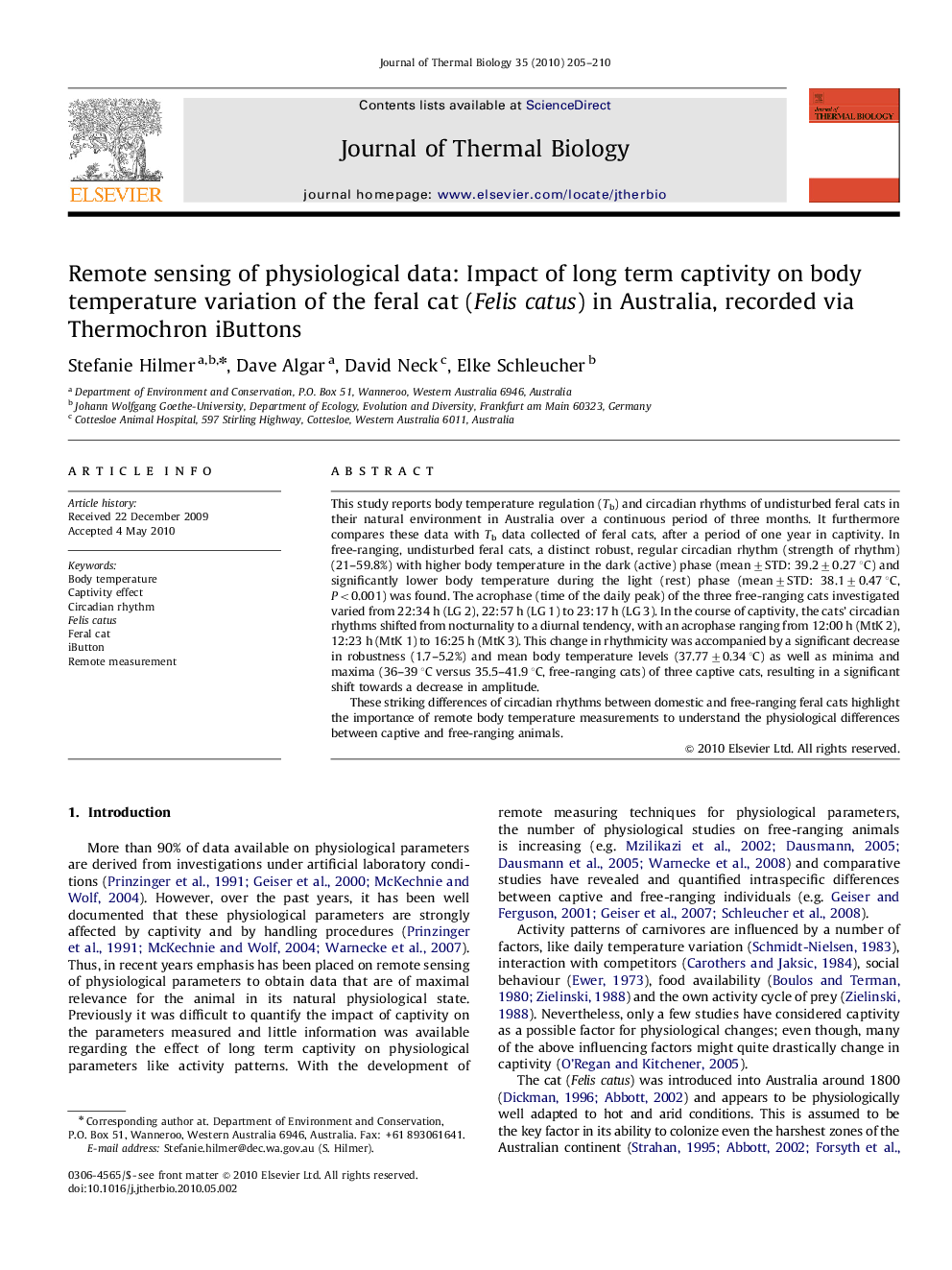| Article ID | Journal | Published Year | Pages | File Type |
|---|---|---|---|---|
| 2843435 | Journal of Thermal Biology | 2010 | 6 Pages |
This study reports body temperature regulation (Tb) and circadian rhythms of undisturbed feral cats in their natural environment in Australia over a continuous period of three months. It furthermore compares these data with Tb data collected of feral cats, after a period of one year in captivity. In free-ranging, undisturbed feral cats, a distinct robust, regular circadian rhythm (strength of rhythm) (21–59.8%) with higher body temperature in the dark (active) phase (mean±STD: 39.2±0.27 °C) and significantly lower body temperature during the light (rest) phase (mean±STD: 38.1±0.47 °C, P<0.001) was found. The acrophase (time of the daily peak) of the three free-ranging cats investigated varied from 22:34 h (LG 2), 22:57 h (LG 1) to 23:17 h (LG 3). In the course of captivity, the cats’ circadian rhythms shifted from nocturnality to a diurnal tendency, with an acrophase ranging from 12:00 h (MtK 2), 12:23 h (MtK 1) to 16:25 h (MtK 3). This change in rhythmicity was accompanied by a significant decrease in robustness (1.7–5.2%) and mean body temperature levels (37.77±0.34 °C) as well as minima and maxima (36–39 °C versus 35.5–41.9 °C, free-ranging cats) of three captive cats, resulting in a significant shift towards a decrease in amplitude.These striking differences of circadian rhythms between domestic and free-ranging feral cats highlight the importance of remote body temperature measurements to understand the physiological differences between captive and free-ranging animals.
